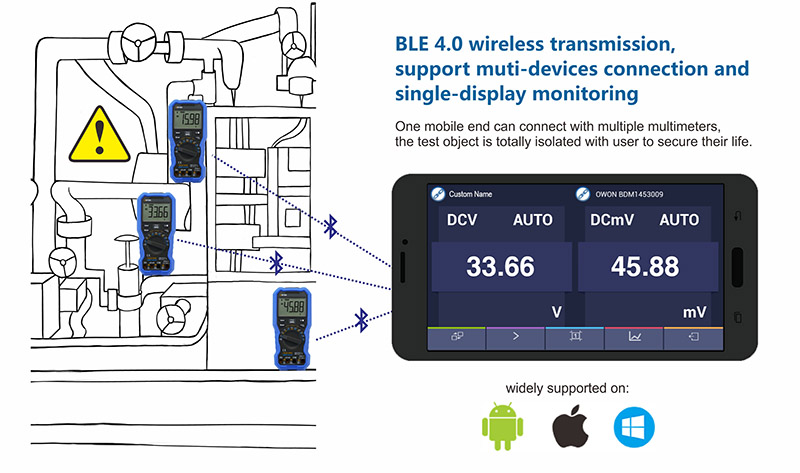1. What is oscilloscope?
The oscilloscope is the equal of the engineer's eyes, It can transform electrical signals that are invisible to the eyes into a visible waveform, using the oscilloscope can observe various signal amplitude waveform curve changes over time, we can get the results through the waveform, such as testing machine where there is a problem, test instruments are in line with the standard, make sure those goals are met, etc., also can use it for test different kinds of power, such as voltage, current, frequency, phase, and amplitude, etc.
2. How to choose a suitable oscilloscope?
Bandwidth: First of all, we need to know how much frequency range for you measure signal (That is called the bandwidth of the oscilloscope). For example, for car repair, it is buying a bandwidth of 100M scope is enough.
Sample rate: That will show better waveform for high sample rate, which will show more detailed waveform. Generally speaking, the sampling rate is five times higher than the bandwidth.
Number of channels: That depends on your measure signals at the same time, it is 2 channels is enough, but like measuring three-phase electricity, you have to buy 4 channels.
3. What is the purpose of the Bluetooth multimeter?
That can be wireless remote for testing, especially for those testing tasks that need to be carried out in dangerous and difficult environments. Engineers can connect and control remotely without going to there; also, for relatively sensitive testing, sometimes when you walking, that will interfere with the test results; there are tests on moving objects, such as testing on moving vehicles.

4. What is the difference between OW18B and B35T+ multimeter?
Both are 3 5/6 digits multimeters. B35T+ is best for industrial use, it can be used with industrial fixtures, it consumes less and can record longer at the same time.
Related Technical Article
- OW18E - Low Power Consumption, High Performance Multimeter
- Oscilloscope and Multimeter FAQ
- XDS Series High Vertical Resolution Oscilloscope (Part 3)
- XDS Series High Vertical Resolution Oscilloscope (Part 2)
- XDS Series High Vertical Resolution Oscilloscope (Part 1)
- Popular Features of Current Oscilloscopes
- Why is the measured amplitude less than the real value?
- Introduction of comparator Part I
- What does oscilloscope consist of?
- Differences between oscilloscope and multimeter
